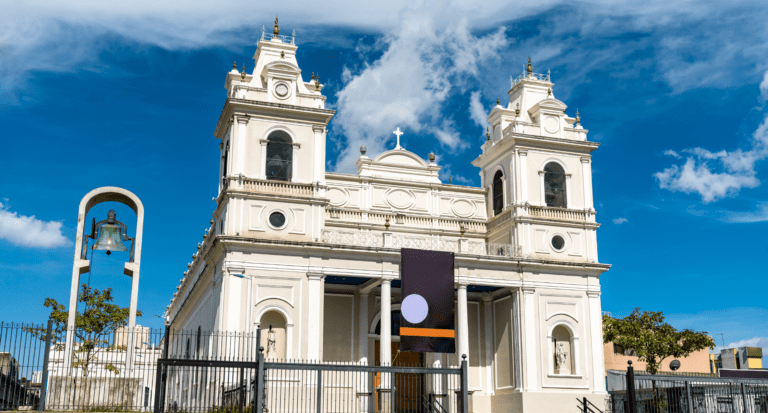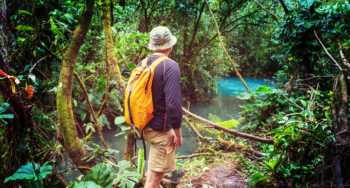San José, Costa Rica: What's Covered
Costa Rica packs cloud forests, volcanoes, and beaches into West Virginia. Dry season (Dec-Apr) brings sunshine and 20-40% higher prices; green season offers morning sun with afternoon showers. First visits work best at 10-14 days, covering Arenal, Monteverde, and the beaches. Choose SJO airport for central destinations or Liberia for Guanacaste. Mountain roads make distances deceptive—add 30% to drive times.
Quick Facts:
- 10-14 days covers 3-4 regions without rushing through destinations
- Regional weather varies dramatically—Caribbean driest Sept-Oct, Pacific wettest
- 4WD essential for Monteverde and remote beaches
- Budget $100-200 daily mid-range, including car, hotel, meals, activities
- Book 4-6 months ahead for Christmas, New Year’s, Easter
Must-See Regions:
- Arenal – Hot springs, volcano views, wildlife
- Monteverde – Cloud forest with quetzals and canopy tours
- Manuel Antonio – Beach-meets-rainforest with guaranteed sloths
One-week trips focus on 2 regions; two-week routes allow 3-4. Families love Manuel Antonio’s accessibility. Tortuguero needs boats; domestic flights save time.
If you need any help with a Costa Rica car rental, contact us now!
Many travelers to Costa Rica view San José as simply a jumping-off point—a place to land before heading to beaches or rainforests. But here’s what I’ve learned after years guiding visitors through this vibrant capital: overlooking San José means missing a genuine slice of Costa Rican culture and history that the resort areas simply can’t provide.
San José (or “Chepe” as locals affectionately call it) offers a fascinating blend of colonial heritage, modern urban energy, and cultural treasures that reward those willing to spend at least a day or two exploring. The city serves as the perfect introduction to understanding Costa Rican society beyond the tourism brochures, with excellent museums, delicious local cuisine, and a walkable downtown core filled with historic architecture.
In this guide, I’ll walk you through everything you need to know to make the most of your time in Costa Rica’s capital—from the must-visit cultural sites to the neighborhoods worth exploring, where to find the best coffee, and how to navigate the city like a local. Let’s discover the San José that most tourists never see but that holds the key to truly understanding Costa Rica.

What Makes San José Different from Other Central American Capitals?
San José sits in a fertile mountain valley at about 1,200 meters (3,900 feet) elevation, giving it a pleasant spring-like climate year-round. Founded in the early 18th century as a small village, it only became Costa Rica’s capital in 1823.
Today’s San José reflects this relatively young history—unlike many Latin American capitals, you won’t find an extensive colonial core, but rather a mix of architectural styles representing different chapters in the country’s development.
How Does Old and New Blend Together Here?
The city’s personality emerges from this blend of old and new. Historic buildings from the coffee boom era stand alongside modern high-rises. Traditional sodas (local restaurants) share streets with trendy gastropubs.
University students chat on smartphones while sitting in plazas that have hosted market days for generations. This juxtaposition gives San José its distinct character—neither completely traditional nor fully modernized, but evolving in its own unique way.
Most tourist activities concentrate in the walkable downtown core, where the majority of museums, historic buildings, and plazas are located. The broader metropolitan area, which locals refer to as the “Gran Área Metropolitana” (GAM), encompasses several neighboring cities including Alajuela (where SJO airport is actually located), Heredia, and Cartago. These suburbs each have their own character and attractions worth exploring if you have extra time.
When Should You Visit San José?
San José can be enjoyed year-round thanks to its temperate climate. The dry season (December-April) offers more reliable sunshine for walking tours, while the green season (May-November) brings afternoon showers but fewer tourists and vibrant greenery in the city’s parks.
Even during the height of the green season, mornings are typically clear, and the rain often provides a welcome excuse to duck into a museum or coffee shop.
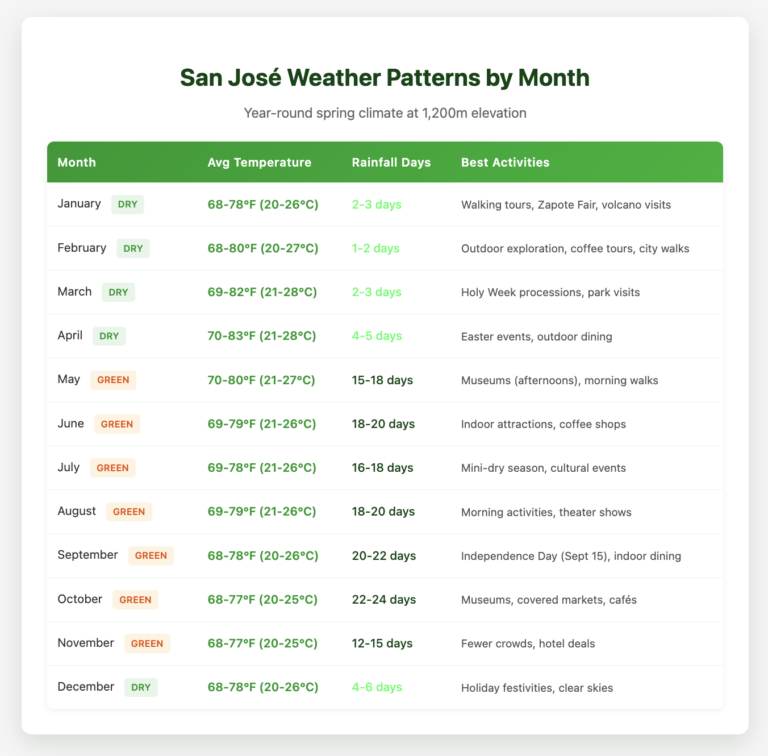
How Do You Navigate Downtown Without Getting Lost?
Downtown San José follows a straightforward grid system that makes navigation relatively easy once you understand a few basics. Streets running east-west are called “calles” (numbered from north to south), while avenues running north-south are “avenidas” (numbered from east to west). The dividing lines are Calle Central and Avenida Central, which intersect at the heart of downtown.
Here’s what confuses most visitors: addresses in San José typically don’t use street numbers but instead reference landmarks and distances. For instance, you might be told a restaurant is “100 meters east of the National Theater” (where 100 meters equals one block). This system can be confusing at first but quickly becomes second nature.
When in doubt, use the prominent landmarks like the National Theater, Central Park, or major plazas to orient yourself.
Which Downtown Areas Should You Focus On?
Centro Histórico (Historical Downtown)
This zone encompasses the National Theater, Plaza de la Cultura, Avenida Central pedestrian boulevard, and surrounding blocks. It’s the most tourist-friendly area with significant police presence, well-maintained streets, and major cultural attractions. Most first-time visitors will spend the majority of their time here.
The area comes alive on weekdays during business hours when office workers, shoppers, and students fill the pedestrian zones. On weekends, particularly Sundays, many businesses close and the atmosphere becomes noticeably quieter—a good time to appreciate the architecture without crowds, but not ideal for shopping.
Morning tip: Start your morning at the Plaza de la Cultura, watching local life unfold while enjoying a coffee from one of the nearby cafés. The pedestrianized section of Avenida Central offers excellent people-watching and street performers on weekdays.
What’s Special About Barrio Amón & Barrio Otoya?
Just north of downtown, these historic neighborhoods feature beautifully restored mansions from the late 19th and early 20th centuries—many now converted to boutique hotels, restaurants, and art galleries. These were once the prestigious addresses of wealthy coffee barons, and the architecture reflects European influences popular during that era.
Walking these quieter streets provides a glimpse into San José’s more elegant past. The area feels more residential and peaceful than the bustling downtown blocks, making it a pleasant area to stay or explore on foot.
The Río Torres forms the northern boundary of these neighborhoods, with the city’s green Parque del Norte running alongside it.
Architecture highlight: The exquisite Victorian and Art Nouveau architecture, particularly along Calle 7 and Avenida 9. The Costa Rican-Atlantic Railroad Station at the edge of Barrio Amón offers a glimpse of the country’s transportation history and the critical role railways played in the coffee export economy.
Is La Sabana Worth the Trek from Downtown?
La Sabana Metropolitan Park marks the western edge of downtown, serving as San José’s version of Central Park. This massive green space was once the city’s international airport but now provides recreation space with walking trails, sports facilities, and a lake. The surrounding area features more modern high-rises, upscale restaurants, and the contemporary art museum.
Western San José feels distinctly more modern and affluent than the historic core. Here you’ll find many international businesses, embassies, and some of the city’s best dining options.
The neighborhoods of Rohrmoser and Escazú (technically a separate city but part of the metropolitan area) house many expatriates and wealthy Costa Ricans.
Weekend scene: La Sabana Park on weekends, when local families come out for picnics, sports, and relaxation. The National Stadium, constructed as a gift from China, hosts football matches and major concerts at the park’s edge.
Which Museums Actually Deserve Your Time (and Money)?
San José’s museums and cultural sites offer fascinating windows into Costa Rica’s history, artistic traditions, and natural heritage. Unlike many world capitals where museum-hopping can take weeks, San José’s compact size means you can visit several major institutions in a single day if you’re efficient.
Why Is the Gold Museum Worth $15?
Located beneath the Plaza de la Cultura, this extraordinary museum houses one of Latin America’s most important collections of pre-Columbian gold artifacts. The dazzling displays include jewelry, religious items, and intricate animal figurines crafted by indigenous cultures before European contact.
Beyond just showcasing the gold itself, the museum excellently contextualizes how these objects played important roles in the region’s ancient societies.
The museum forms part of the Central Bank Museums, which also includes a numismatic (money) collection tracing Costa Rica’s economic history. The combined exhibits provide insight into both pre-colonial wealth and the development of the modern Costa Rican economy.
Practical details:
- Hours: 9:00 AM – 5:00 PM, Tuesday through Sunday (closed Mondays)
- Admission: $15 for foreigners, includes access to both the Gold Museum and Numismatic Museum
- Time needed: 1-2 hours
- Insider tip: English descriptions are excellent, but guided tours (available in multiple languages) provide additional context
What Story Does the National Museum Tell?
Housed in the repurposed Bellavista Fortress—a former military barracks with bullet holes still visible from Costa Rica’s 1948 civil war—the National Museum offers the most comprehensive overview of Costa Rican history and culture.
The museum’s location itself represents an important national story: after abolishing its army in 1949, Costa Rica symbolically transformed military buildings into cultural institutions.
Highlights include pre-Columbian artifacts, colonial-era displays, butterfly gardens, and exhibits on the country’s remarkable biodiversity. The museum does an excellent job connecting natural history with human development, showing how Costa Rica’s unique geography shaped its cultural evolution.
Practical details:
- Hours: 8:30 AM – 4:30 PM, Tuesday through Saturday; 9:00 AM – 4:30 PM Sunday (closed Mondays)
- Admission: $12 for foreigners
- Time needed: 2-3 hours
- Can’t miss: The butterfly garden in the central courtyard and the sweeping city views from the bullet-scarred former fortress walls
Should You Tour or Just Visit the National Theater?
The crown jewel of San José’s architecture, the National Theater stands as a testament to the wealth generated during Costa Rica’s coffee boom of the late 19th century. Completed in 1897 and modeled after the Paris Opera House, this opulent building features Italian marble, Belgian ironwork, and a ceiling adorned with Aleardo Villa’s famous mural depicting coffee harvesting.
Beyond its architectural splendor, the theater represents a pivotal moment in Costa Rican identity—when the young nation sought to establish its cultural credentials on the world stage. Today, it continues as a working theater hosting performances, but visitors can take guided tours or simply enjoy coffee at the elegant café inside.
Practical details:
- Hours: 9:00 AM – 4:00 PM daily for visits; performance schedule varies
- Tour cost: $10 for guided tours
- Time needed: 30-60 minutes for a tour
- Better option: Check the performance schedule in advance—attending a concert or play here provides the full experience of the theater as it was intended
Why Does Costa Rica Have the World’s Largest Jade Collection?
Housing the world’s largest collection of American jade, this modern museum showcases over 7,000 exquisitely crafted jade pieces, primarily from pre-Columbian cultures. The five-story building presents artifacts in thematic exhibitions exploring indigenous cosmology, daily life, and symbolism rather than simple chronological displays.
What makes this museum special is its focus on explaining the cultural significance of jade in pre-Columbian societies, where it was valued even more highly than gold for its spiritual associations. Interactive displays and thoughtful curation make complex archaeological concepts accessible to visitors of all backgrounds.
Practical details:
- Hours: 10:00 AM – 5:00 PM, Monday through Sunday
- Admission: $15 for foreigners
- Time needed: 1-2 hours
- Timing tip: Visit later in the afternoon when tour groups have typically departed
Is the Children’s Museum Worth It for Families?
Families shouldn’t miss this interactive museum housed in a repurposed penitentiary. The grim fortress-like exterior gives way to colorful, engaging exhibits covering science, history, technology, and cultural topics designed specifically for younger visitors.
While primarily aimed at children, adults will also appreciate how the museum approaches Costa Rican history and environmental topics through hands-on activities.
The contrast between the building’s original purpose and its current joyful function represents Costa Rica’s commitment to education over punishment—another example of the country’s progressive values reflected in its public institutions.
Practical details:
- Hours: 8:00 AM – 4:30 PM, Tuesday through Friday; 9:30 AM – 5:00 PM weekends (closed Mondays)
- Admission: $7 for foreigners
- Time needed: 2-3 hours with children
- Language note: Most interactive elements have instructions in both Spanish and English
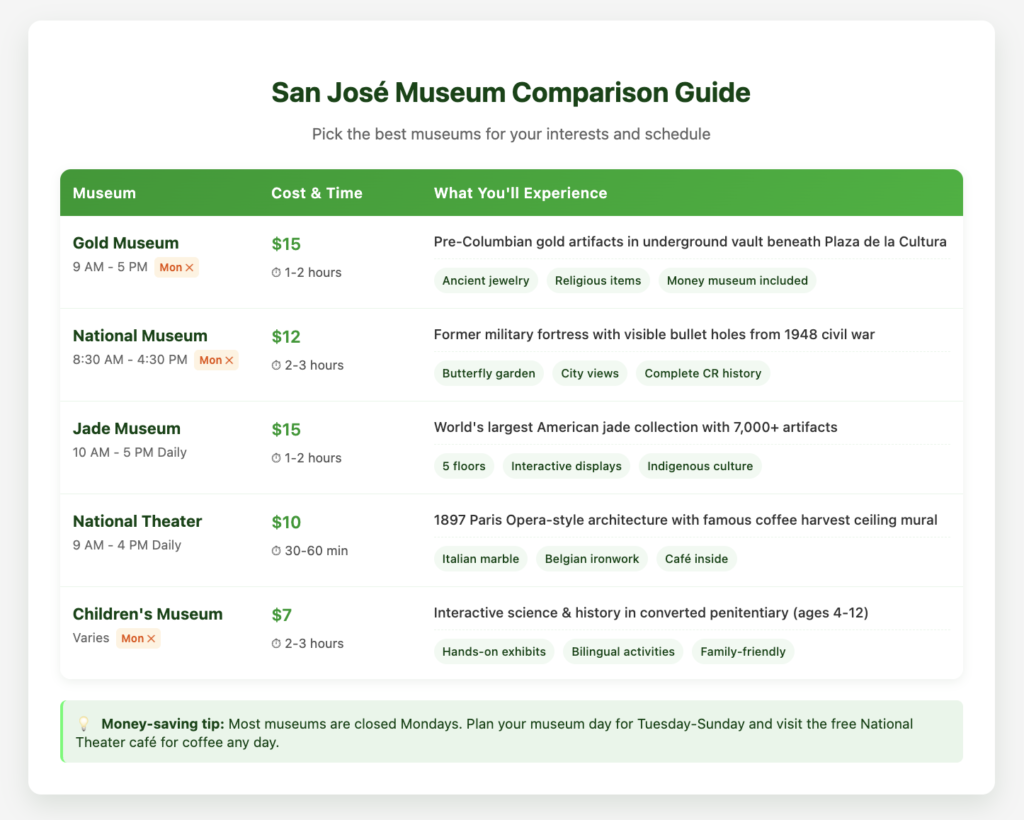
Where Do Locals Actually Spend Their Free Time?
The soul of San José reveals itself in its public spaces, where locals gather to relax, socialize, and celebrate. These green spaces and plazas provide welcome respite from urban congestion and offer visitors authentic glimpses into daily life.
What Happens at Parque Central Throughout the Day?
This historic plaza sits at San José’s geographical heart, directly in front of the Metropolitan Cathedral. Once the city’s main gathering space, the park retains its importance as a meeting point and landmark.
The towering palm trees, wrought-iron bandstand, and benches filled with chatting locals create a scene that has remained largely unchanged for decades.
On weekdays, the park fills with office workers on lunch breaks, retirees reading newspapers, and street vendors selling everything from lottery tickets to fresh fruit. Weekends often bring impromptu musicians, especially on Sunday mornings when cathedral services conclude. The surrounding blocks house some of the city’s oldest businesses and historic buildings.
Best time to visit: Around noon on a weekday to see the full spectrum of San José society sharing this communal space. The recently renovated Metropolitan Cathedral across from the park merits a quick visit—its relatively modest exterior conceals beautiful stained glass and an ornate altar inside.
Why Do Families Love La Sabana Metropolitan Park?
La Sabana serves as the city’s largest urban green space—a 72-hectare oasis featuring lakes, sports facilities, picnic areas, and jogging paths. Former site of the international airport until 1955, the expansive grounds now offer San José residents room to breathe and play amid the urban landscape.
The park comes alive on weekends when families spread picnic blankets under the trees, amateur football matches occupy every available field, and vendors sell traditional treats like churros and shaved ice.
The east side of the park houses the National Stadium, while the former airport terminal now serves as the Costa Rican Art Museum (Museo de Arte Costarricense).
Activity options: Rent a paddleboat on the lake for a leisurely view of the park and surrounding cityscape. The Costa Rican Art Museum deserves a visit for its collection of national artists and the building’s art deco details from its airport days.
What Makes Parque Morazán & Parque España Special?
These adjacent parks in the northeastern corner of downtown create a green corridor filled with historical monuments, tropical gardens, and cultural significance. Parque Morazán features the distinctive Temple of Music (Templo de la Música), a neoclassical bandstand that hosts occasional weekend concerts.
Nearby Parque España offers shadier, more intimate pathways with wrought-iron benches and small fountains.
These parks border the historic Barrio Amón neighborhood, making them perfect starting points for architecture walks. The surrounding blocks house several important cultural institutions including the National Library and the Spain Cultural Center with rotating art exhibitions.
Sunday bonus: Sunday mornings bring an organic farmers’ market to Parque España, where you can sample local produce and artisanal foods while chatting with producers. The tranquil atmosphere here provides a pleasant contrast to the busier commercial areas nearby.
How Does Plaza de la Democracia Reflect Costa Rica’s Values?
Located behind the National Museum, this spacious plaza commemorates former President José Figueres Ferrer’s abolition of Costa Rica’s military in 1949. The open design frequently hosts cultural events, artisan markets, and political gatherings, reflecting its role as a space for civic engagement.
The plaza’s southern edge features the impressive National Library building, while artisan souvenir markets are often set up along its western perimeter. The elevated position offers nice views toward downtown, and the space serves as a natural extension of the National Museum visit.
Market days: Check with your hotel about weekend artisan markets, which bring together crafters from across the country selling authentic handmade items—far better quality than the mass-produced souvenirs found in many shops.
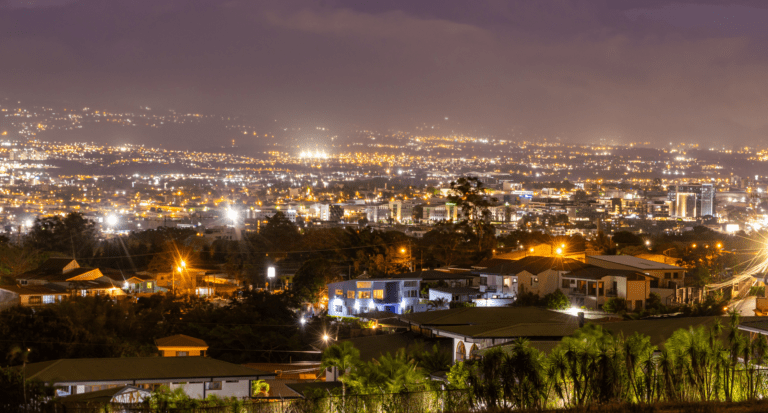
Which Neighborhoods Show You the Real San José?
San José reveals different facets of itself in each distinct neighborhood. Exploring beyond the tourist core rewards visitors with authentic local experiences and a deeper understanding of urban Costa Rican life.
Why Is Everyone Talking About Barrio Escalante?
Once a quiet residential area, Barrio Escalante has transformed into San José’s hippest culinary zone. Centered around “Calle 33” (now branded as “Paseo Gastronómico La Luz”), this neighborhood houses the city’s most innovative restaurants, craft beer pubs, and third-wave coffee shops in converted historic homes.
The area combines architectural charm with culinary creativity, attracting a mix of young professionals, expatriates, and food enthusiasts. Evening energy concentrates along La Luz, where restaurants spill onto outdoor patios and string lights create a festive atmosphere.
During daytime, the quieter side streets reward exploration with specialty shops, small art galleries, and beautiful examples of early 20th-century residential architecture.
Best times: Visit on Wednesday through Saturday evenings when the restaurant scene reaches its liveliest point. Try Costa Rican craft beers at one of several gastropubs, which have played a key role in developing the country’s emerging beer culture beyond traditional mass-market brands.
What Will You Find at Mercado Central?
The Central Market (Mercado Central), operating since 1880, provides the most authentic look at everyday San José life. This labyrinth of narrow alleys houses hundreds of vendors selling everything from fresh produce and medicinal herbs to leather goods and traditional costarican crafts.
The market’s numerous small sodas (traditional eateries) serve some of the city’s most authentic and affordable local dishes.
The surrounding streets expand the market experience, each with specialized offerings: Avenida Central’s pedestrian boulevard features street performers and mainstream shopping; the chaotic Coca Cola district (named for a former soda factory) houses the main bus terminal amidst discount stores; and Borbon Market offers a grittier but more local produce-shopping experience.
Lunch recommendation: Have lunch at one of the traditional sodas inside Mercado Central, where daily specials (casados) offer the perfect introduction to Costa Rican cuisine. Look for Soda Tapia, operating continuously since the market opened and famous for its homestyle recipes as well as the famous Lolo Mora artisan ice cream.
What’s the Vibe in San Pedro’s University District?
Home to the University of Costa Rica, San Pedro pulses with youthful energy and intellectual vibrancy. Located in the eastern metropolitan area (technically in the separate municipality of Montes de Oca but seamlessly connected to San José), this district offers a glimpse of contemporary Costa Rican culture through its student-friendly cafés, used bookstores, alternative theaters, and affordable eating options.
The central landmark is the massive Universidad de Costa Rica campus, whose beautiful grounds warrant a stroll. Surrounding neighborhoods like Barrio La California have developed vibrant nightlife scenes catering to the student population, with numerous bars, small concert venues, and dance clubs representing various musical traditions from reggae to rock.
Saturday morning gem: Visit the unique Feria Verde organic farmers market on Saturday mornings in nearby Barrio Aranjuez, where sustainably-minded producers sell everything from farm-fresh vegetables to artisanal cheeses, handmade soaps, and prepared foods in a festive atmosphere with live music.
How Different Is Escazú from Central San José?
For a glimpse of upscale Costa Rican life, venture to Escazú and the western suburbs. Though technically separate municipalities, these areas function as affluent extensions of San José. Here you’ll find luxury shopping malls, international restaurant chains, gated communities, and the residences of many expatriates and wealthy Costa Ricans.
Escazú blends ultra-modern developments with traditional elements—sleek high-rises overlook centuries-old parish churches, and exclusive boutiques operate alongside traditional farmers’ markets.
The area around Multiplaza Escazú mall and the Country Club Plaza represents the most developed commercial district, while higher in the hills, towns like San Antonio de Escazú maintain more traditional character with spectacular city views.
Dining splurge: For a splurge meal, try one of Escazú’s upscale restaurants Mia Restaurante or Taj Mahal that blend international techniques with Costa Rican ingredients. The hills above Escazú also offer panoramic viewpoints of the entire Central Valley—particularly spectacular at night when the urban lights spread across the landscape.
Where Should You Eat to Experience Real Costa Rican Flavors?
San José’s food scene strikes a balance between traditional Costa Rican cooking and international influences. From humble sodas to innovative fine dining, the city offers culinary experiences for every palate and budget.
What Exactly Is a Casado and Why Do Costa Ricans Love It?
Costa Rican food emphasizes fresh ingredients and straightforward preparation rather than intense spices or complex techniques. The foundation of traditional cooking rests on rice, beans, plantains, and proteins—humble but satisfying components that reflect the country’s agricultural heritage.
The classic Costa Rican meal is the “casado” (meaning “married”), a hearty plate featuring rice, black beans, plantains, salad, and your choice of protein—typically beef, chicken, pork, or fish. This balanced meal represents what a working person might expect for lunch, the day’s main meal in traditional households.
Where to try traditional cuisine:
- Soda Tapia in Mercado Central—Operating since 1880, this market stalwart serves classic recipes passed through generations
- La Criollita (Calle 7, between Avenidas Central and 1)—Traditional dishes in a more upscale setting with excellent service
- Nuestra Tierra (Avenida 2, Calle 15)—Authentic Costa Rican cooking in a space decorated with antiques from rural kitchens
Must-try dishes:
- Gallo Pinto—The national breakfast of rice and beans cooked together with onions, peppers, and Lizano sauce
- Olla de Carne—Hearty beef and vegetable stew featuring native root vegetables like yuca and tiquisque
- Arroz con Leche—Rice pudding dessert flavored with cinnamon and lemon zest
How Has Coffee Culture Evolved in San José?
Coffee has shaped Costa Rican history and economy since the 19th century, and San José offers outstanding opportunities to experience the country’s acclaimed coffee culture. The city has embraced the third-wave coffee movement while maintaining traditional café culture.
Historically, Costa Rican coffee preparation centered around the traditional chorreador—a wooden stand with a cloth filter through which hot water drips. Today’s coffee scene balances this heritage with modern preparation methods like pour-over, espresso, and cold brew, often using single-origin beans from specific regions within Costa Rica.
Top coffee experiences:
- Café Británico (Barrio Amón)—Historic café operating since 1929 with traditional ambiance
- Franco (Escalante)—Modern micro-roaster focusing on direct-trade relationships with local producers
- Cafeoteca (Los Yoses)—Educational café offering tasting flights showcasing different Costa Rican growing regions
Coffee ordering tip: Look for coffees from specific growing regions like Tarrazú, West Valley, or Central Valley, each with distinctive flavor profiles. Most quality cafés can explain the characteristics of different regional beans.
What’s Driving the Modern Dining Scene?
Beyond traditional cuisine, San José has developed a vibrant contemporary food scene where innovative chefs reinterpret local ingredients through modern techniques. This movement emphasizes Costa Rican biodiversity, indigenous ingredients, and sustainable sourcing while incorporating international influences.
The epicenter of this culinary evolution is Barrio Escalante’s “Paseo Gastronómico La Luz,” where converted homes house restaurants ranging from sophisticated farm-to-table establishments to casual gastropubs. These restaurants attract cosmopolitan locals and visitors seeking experiences beyond traditional dishes.
Standout modern restaurants:
- Al Mercat (Escalante)—Farm-to-table concept where chefs work directly with producers and maintain their own urban garden
- Restaurante Silvestre (Barrio Amón)—Contemporary Costa Rican cuisine highlighting native ingredients in a beautifully restored historical home
- Apotecario (Escalante)—Creative cocktails paired with innovative small plates in an atmospheric setting
Budget tip: Many restaurants offer “menú ejecutivo” (executive lunch) on weekdays—fixed-price options that provide excellent value for sampling higher-end establishments on a budget.
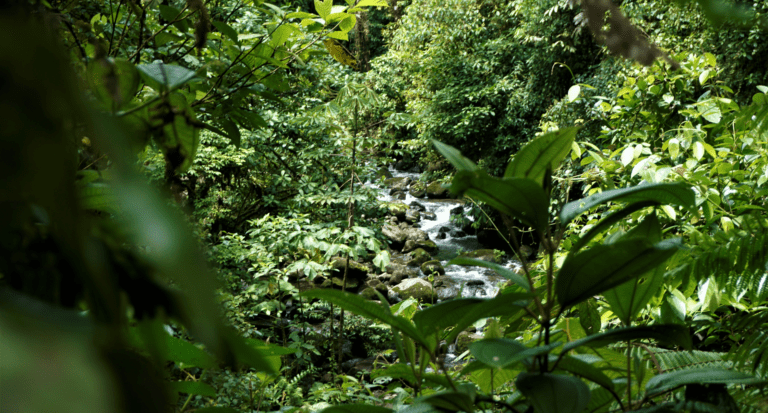
What Should You Buy (and What Should You Skip)?
From traditional handicrafts to contemporary Costa Rican designs, San José offers diverse shopping experiences across various price points and styles.
Is Mercado Central Worth the Chaos?
The historic Central Market remains San José’s commercial heart after 140+ years of continuous operation. Beyond the food stalls and sodas, the market houses vendors selling traditional Costa Rican items:
- Hand-painted oxcarts and miniatures (Costa Rica’s most iconic handicraft)
- Wooden items carved from native hardwoods
- Traditional coffeepots and serving pieces
- Natural remedies and medicinal herbs used in folk healing
The market’s authenticity comes with some grittiness—narrow aisles, persistent vendors, and occasional petty theft targeting obvious tourists. Visit during morning hours (8-11 AM) for the best experience, keep valuables secure, and be prepared to negotiate, though haggling is less aggressive here than in markets in some other Latin American countries.
Authentic souvenir tip: For an authentic souvenir, look for chorreadores (traditional wooden coffee makers) and jícaras (natural gourd cups) used in traditional Costa Rican coffee preparation.
Where Can You Find Quality Artisan Work?
Several dedicated artisan markets showcase Costa Rican crafts in more tourist-friendly environments:
Plaza de la Democracia Artisan Market—Permanent stalls behind the National Museum feature higher-quality crafts than typical souvenir shops, often with artisans working on-site.
Feria Verde (Aranjuez, Saturday mornings)—Beyond produce, this farmers’ market includes numerous craft vendors emphasizing sustainable and natural materials.
National Artisans Market (Plaza de la Democracia, irregular schedule)—When scheduled, this expanded market brings craftspeople from throughout Costa Rica, offering direct interaction with creators.
Quality check: Look for the “Certificado de Origen” label that authenticates items made in Costa Rica—particularly important for coffee purchases, as some souvenir shops sell imported beans despite Costa Rica’s renowned coffee industry.
What About Contemporary Costa Rican Design?
Beyond traditional crafts, San José nurtures a growing community of designers creating modern products with Costa Rican identity. These contemporary items—from home goods to fashion—make sophisticated souvenirs connecting traditional influences with current design trends.
Where to find contemporary Costa Rican design:
- Tienda eÑe (Avenida Central)—Showcase for local designers creating modern products with Costa Rican cultural references
- SIKWA (Escalante)—Indigenous-inspired contemporary design with a strong commitment to Costa Rica’s native communities
- Galería Namu (Barrio Otoya)—Focuses on indigenous art from Costa Rica and Panama in both traditional and contemporary expressions
Shopping strategy: Look for items incorporating traditional techniques or motifs in contemporary applications—like modern fashion using indigenous textiles or household items featuring pre-Columbian-inspired patterns.
How Do You Get Around San José Efficiently?
Should You Walk, Bus, Taxi, or Drive?
Walking: The downtown core is compact and walkable, with most major attractions within a 20-minute walk of each other. Stick to busier streets during daylight hours, and take normal urban precautions.
Public Buses: San José’s extensive bus system is affordable (typically 300-400 colones/~$0.60 per ride) but can be confusing for visitors. Major hotels can provide route information for common destinations.
Taxis: Official taxis are red with yellow triangles on the doors and always use meters (called “marias”). The starting fare is about 600 colones (~$1.20) plus 600 colones per kilometer. Rideshare services like Uber also operate extensively.
City Tours: For efficiency, consider the Hop On-Hop Off City Tour bus that connects major attractions with commentary, or walking tours led by local guides who provide cultural context.
Does a Rental Car Make Sense?
Car Rental: If you want the freedom to go beyond the city, then consider car rental to explore San Jose and the surrounding area at your own pace. Having your own vehicle opens up fantastic day trip possibilities that public transportation can’t easily reach.

What About Safety While Getting Around?
San José is generally safe for visitors who exercise common urban precautions. The main tourist areas have significant police presence, particularly around Plaza de la Cultura and the National Theater. Like in any city, visitors should:
- Stay alert in crowded areas like markets and bus stations where pickpocketing occurs
- Avoid displaying expensive electronics or jewelry, particularly when walking
- Use official red taxis or ride-sharing apps rather than unlicensed transportation
- Exercise greater caution after dark, particularly in less-populated areas
- Keep copies of important documents and leave originals in hotel safes
The downtown historic district and tourist areas have become significantly safer over the past decade thanks to increased security cameras, police patrols, and urban renewal projects. Most problems visitors encounter involve petty theft rather than violent crime.
Where Should You Stay for the Best San José Experience?
San José offers accommodations across price ranges, with particular strengths in these categories:
Want Historic Charm?
Historic Boutique Hotels: Converted mansions in Barrio Amón and Otoya offer character-filled accommodations with architectural details from Costa Rica’s coffee baron era.
- Hotel Grano de Oro—Luxurious converted tropical Victorian mansion with one of the city’s best restaurants
- Hotel Don Carlos—Family-run hotel in a historic building with traditional Costa Rican decor and excellent service
Need Modern Amenities?
Business Hotels: Modern high-rises catering primarily to business travelers offer reliable comfort and amenities.
- Gran Hotel Costa Rica—Historic property adjacent to the National Theater, recently renovated with contemporary amenities
- Hilton Garden Inn—Modern accommodations in the heart of La Sabana with excellent city views
Traveling on a Budget?
Budget-Friendly Options: Hostels and small hotels provide economical bases for exploration.
- Selina San José—Modern hostel concept with private rooms and co-working spaces appealing to digital nomads
- Hotel Aranjuez—Eco-friendly hotel in a quieter residential neighborhood with excellent breakfast included
Location tip: Hotels in Barrio Amón and downtown provide the most convenient access to attractions but may have street noise. Properties in Sabana Norte or Escalante offer quieter surroundings while remaining accessible to sights.
Which Day Trips from San José Are Actually Worth It?
San José’s central location makes it an excellent base for exploring major attractions within a 1-2 hour radius. Consider these day trips to complement your city experience:
Can You Really See Both Oceans from Volcán Irazú?
Costa Rica’s tallest active volcano offers the surreal experience of standing at 3,432 meters (11,260 feet) elevation looking into multiple craters. On clear days, visitors can see both the Caribbean and Pacific coasts simultaneously from the summit area.
Practical details:
- 1.5-hour drive from San José via Cartago
- No advance reservations needed, but arrive early (before 10 AM) for best visibility
- Significantly colder temperatures at this elevation—bring layers even if San José is warm
- Combine with a visit to the historic Basílica de Nuestra Señora de los Ángeles in Cartago
- Limited facilities—bring water and snacks
Photo opportunity: The principal crater’s mineral-rich lake shifts between emerald green and crimson red depending on volcanic activity—a phenomenon that creates spectacular photo opportunities.
Why Do You Need Reservations for Volcán Poás?
Just 50 kilometers north of San José, Poás features one of the world’s largest active crater lakes, with otherworldly turquoise waters surrounded by steaming fumaroles. The dramatic landscape represents Costa Rica’s geological activity in its most accessible form.
Practical details:
- 1.5-hour drive from San José
- Advance reservations required through the national park website
- Best visited in morning hours when clouds are less likely to obscure the crater
- Facilities include visitor center, cafe, and well-maintained trails
- Combine with a coffee plantation tour in nearby Alajuela for a full day experience
Hidden trail: The easy Botos Trail leads to a second crater now filled with a peaceful rainwater lake surrounded by dwarf cloud forest—a dramatic contrast to the active main crater.
Which Volcano Offers the Best Wildlife?
Lesser-known than Poás or Irazú but equally impressive, Barva Volcano offers a more immersive rainforest experience with fewer tourists. The inactive volcano features multiple lagoons surrounded by pristine cloud forest teeming with wildlife.
Practical details:
- 1-hour drive to the park entrance from San José
- Moderate hiking required to reach the lagoons (5-6 km round trip with elevation gain)
- Much less developed than other volcano parks—come prepared with appropriate hiking gear
- Guide recommended for identifying wildlife and navigating trails
- Limited facilities—bring sufficient water and food
Wildlife bonus: The Barva section of Braulio Carrillo offers some of the best bird-watching near San José, with opportunities to spot quetzals, toucans, and numerous hummingbird species.
Which Coffee Tour Isn’t Just A Tourist Theater?
The Central Valley surrounding San José produces some of Costa Rica’s finest coffee. Numerous plantations offer tours explaining the journey from cherry to cup, often including tastings of different preparations and processing methods.
Recommended experiences:
- Doka Estate—Traditional plantation with comprehensive tour showing all aspects of production
- Britt Coffee Tour—Theatrical presentation with excellent explanation of coffee culture and history
- Finca Rosa Blanca—Boutique organic coffee operation with intimate tours focusing on sustainability
Timing tip: Morning tours typically include more active processing demonstrations, as coffee picking and initial processing happen early in the day during harvest season (November-February).
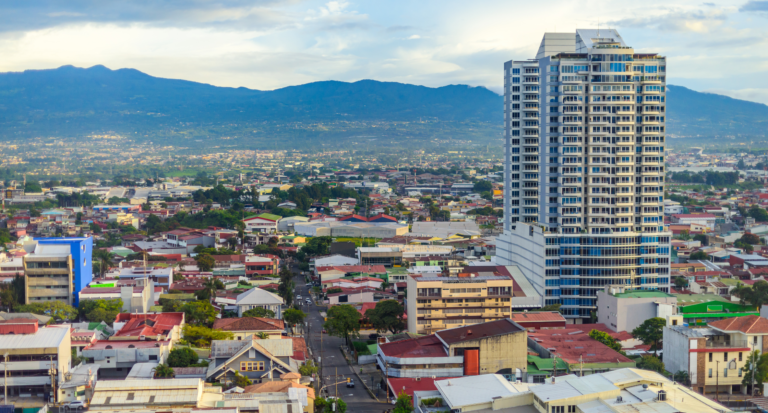
What Cultural Norms Should You Know?
Understanding a few cultural norms helps visitors navigate San José with greater ease and respect:
What Does “Pura Vida” Really Mean?
“Pura Vida” (Pure Life) serves as both greeting and philosophy in Costa Rica. The phrase reflects the national emphasis on simplicity, optimism, and appreciation for life’s essentials. Visitors will hear it used in contexts ranging from “hello” to “everything’s cool” to “you’re welcome.”
This outlook manifests in everyday San José life through a generally relaxed approach to time and stress. While the capital moves faster than rural areas, it still operates with less urgency than many major cities. Embracing this mindset—particularly when facing delays or changed plans—enhances your experience.
How Do Costa Ricans Interact Socially?
Costa Ricans (Ticos) typically greet with a light handshake, though friends may exchange cheek kisses or light hugs. Personal space runs smaller than in North America or northern Europe—closer conversational distance is normal and not meant to cause discomfort.
Small talk often precedes business transactions, even brief ones. Taking a moment to exchange pleasantries before making requests shows respect. Basic Spanish phrases are appreciated even from non-fluent speakers, and most San José residents involved in tourism or service industries speak at least some English.
What About Tipping and Payment?
Most restaurants automatically add a 10% service charge to bills, making additional tipping optional but appreciated for excellent service (an extra 5-10% is generous). Tour guides customarily receive tips ($5-10 per person for half-day tours), as do hotel housekeeping staff (about $1-2 per day).
While credit cards are widely accepted in established businesses, carrying some cash (both colones and small-denomination US dollars) proves useful for markets, small sodas, and transportation. ATMs are plentiful in San José, with major banks concentrated around Avenida Central and Avenida Segunda.
Why Does San José Matter for Understanding Costa Rica?
Many visitors rush through San José, eager to reach beaches or rainforests, but the capital deserves at least a full day of exploration—ideally two—to appreciate its cultural significance and urban energy. The city serves as more than just a transit point; it’s where you’ll gain insights into modern Costa Rican life that provide context for everything else you’ll experience in the country.
San José reveals aspects of Costa Rica that remain invisible in tourist enclaves: the strong middle-class democracy that distinguishes the country from many neighbors, the emphasis on education and culture that explains the excellent English you’ll encounter nationwide, and the blend of tradition and modernity that characterizes contemporary Costa Rican identity.
By spending time in the capital, you’ll discover how Costa Rica’s natural conservation ethos extends into its urban planning, with initiatives like the gradually expanding network of urban parks, bike lanes, and pedestrianized streets. The city shows a society in transition—balancing development with sustainability, tradition with innovation, and local character with global influences.
How Can You Make the Most of Just One Day?
If you have just one day in San José, prioritize these experiences for an efficient introduction to the city:
Morning: Begin at the Plaza de la Cultura, visiting the Gold Museum beneath the plaza before walking to the adjacent National Theater. Continue to the central market for lunch at a traditional soda inside.
Afternoon: Explore the National Museum to understand Costa Rica’s history and natural heritage, then walk through historic Barrio Amón admiring the architecture. End with early dinner in Barrio Escalante’s restaurant district.
Evening: Return to Plaza de la Cultura or Nacional Theater area to experience the city center illuminated at night—a completely different atmosphere from daytime.
What If You Have Two Days?
With a second day, add these experiences:
Morning: Visit either the Jade Museum or Children’s Museum (especially if traveling with family), then explore La Sabana Park and the Costa Rican Art Museum.
Afternoon: Take a coffee plantation tour in the surrounding Central Valley or explore one of the outlying neighborhoods like San Pedro for local shopping and cafe culture.
Evening: Experience a performance at the National Theater or enjoy the lively atmosphere in Barrio Escalante as locals gather for after-work socializing.
How Does San José Connect to Popular Routes?
San José connects logically to several popular routes through Costa Rica:
Heading northwest toward Arenal Volcano and Guanacaste? Consider stopping at the Poás Volcano and La Paz Waterfall Gardens on your departure day.
Traveling to the Caribbean coast? The journey from San José to Puerto Viejo passes through spectacular Braulio Carrillo National Park, where the Rainforest Aerial Tram offers a worthwhile break in your journey.
Bound for Manuel Antonio or the Central Pacific? The crocodile bridge at Río Tárcoles makes an interesting stop, with dozens of massive crocodiles visible from the highway bridge. Ensure that your vehicle remains within eyesight if you stop as this popular site attracts petty theft.
San José also serves as the perfect reentry point before international departure. A final night in the capital allows decompression from beach or jungle experiences, an opportunity for last-minute shopping, and convenient access to both international airports.
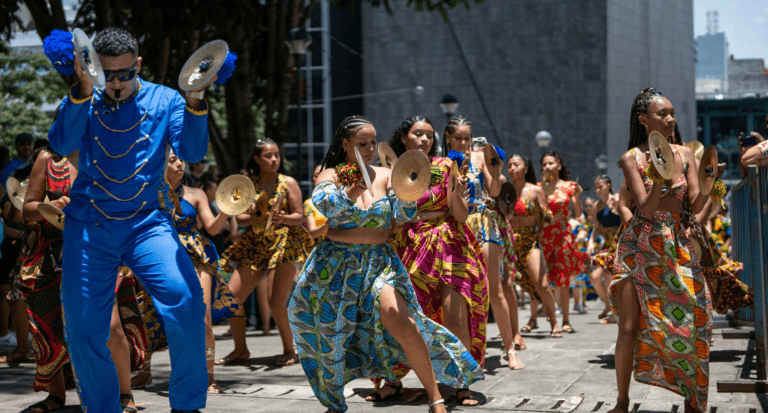
How Does Weather Affect Your San José Experience?
Unlike coastal regions where weather significantly impacts visitor experiences, San José remains pleasant year-round thanks to its elevation. However, seasonal variations do affect specific aspects of a capital city visit.
What’s Different During Dry Season?
The dry season brings consistently sunny days perfect for walking tours and outdoor activities. This period coincides with the North American and European winter, making it San José’s busiest tourist season. The weather cooperates beautifully with outdoor exploration, though afternoons can become quite warm (mid-80s°F/around 30°C) from February through April.
Cultural activities peak during these months, with the largest festivals typically scheduled during the dry season. January brings the Zapote Fair with carnival rides and traditional bullfights (where the bulls aren’t harmed), while Holy Week (Easter) features religious processions through downtown streets.
Hotel tip: Hotels in San José often offer better rates during weekends in dry season, as business travelers who fill rooms during weekdays depart, creating weekend availability even during high tourist season.
Why Might You Prefer Green Season?
The capital’s green season typically brings sunny mornings followed by afternoon showers—a pattern that smart travelers can work around by scheduling indoor activities like museums for afternoons. The increased rainfall transforms the city’s parks and surrounding mountains into lush green landscapes, offering more photogenic backdrops than the sometimes-dusty dry season views.
Cultural advantages during the green season include significantly fewer tourists at major attractions and more opportunity to interact with locals rather than other visitors. Car rental and hotel rates drop considerably, especially from September through November.
Rain strategy: Always carry a small umbrella during the green season, even when mornings look perfectly clear. Afternoon showers often develop quickly, though they typically pass equally fast, rarely ruining an entire day’s plans.
Where Are the Best Photo Spots?
For photography enthusiasts, San José offers diverse visual opportunities often overlooked by casual visitors:
Which Buildings Tell Costa Rica’s Story?
The city’s architectural diversity tells Costa Rica’s development story through buildings, with these photographic highlights:
Historical gems: The metallic school buildings like Escuela Metálica (Metal School) were prefabricated in Belgium and shipped to Costa Rica in the early 1900s, showcasing unique European-tropical fusion architecture.
Post Office Building: The grand Correo Central building combines neoclassical elements with tropical adaptations, particularly beautiful in morning light when the facade glows golden.
Barrio Amón mansions: The historic homes feature intricate woodwork, tropical gardens, and European architectural influences adapted to Central American conditions.
Contrasting eras: Capture the juxtaposition of colonial-era buildings alongside mid-century modernism and contemporary glass towers—all visible within single frames in many downtown locations.
Where Can You Capture Local Life?
San José’s public spaces offer vibrant human moments that capture Costa Rican urban life:
Avenida Central: The pedestrianized boulevard provides endless people-watching opportunities, particularly around Plaza de la Cultura where street performers, vendors, and everyday Costa Ricans create a constantly changing human landscape.
Mercado Central: Early morning activity (7-9 AM) captures vendors setting up for the day in dramatic light filtering through the market’s skylights.
Plaza de la Democracia: Weekend artisan markets bring color, craftsmanship, and interaction opportunities in an outdoor setting with good natural light.
Evening transitions: The golden hour around 5 PM captures the city’s transition from workday to evening as office workers head home, creating compelling shadow patterns among downtown buildings.
What Are the Practical Photography Tips?
Best viewpoints: For city panoramas, try the hill behind the Costa Rican Art Museum in La Sabana Park, the upper floors of the National Museum’s tower, or the eastern edge of San Pedro where the university sits on higher ground.
Light considerations: The clear morning light between 7-9 AM offers the cleanest views before urban haze develops. During the green season, the hour after rainfall provides exceptionally clear conditions as precipitation settles airborne dust.
Safety for photographers: Maintain awareness when photographing with expensive equipment. Consider using a non-descript camera bag, keeping extra gear concealed, and avoiding changing lenses or displaying equipment in crowded areas, particularly around bus stations and markets.
How Can You Connect with Locals?
While San José doesn’t have the immediate friendliness of rural Costa Rica, opportunities for meaningful local interaction abound for visitors who approach with openness and basic cultural understanding.
What Spanish Phrases Open Doors?
English levels vary widely in San José. In tourist facilities, international businesses, and among younger people, you’ll find strong English proficiency. However, in markets, local buses, and neighborhood establishments, Spanish predominates.
Learning even basic Spanish phrases demonstrates respect and opens doors. Costa Ricans appreciate language efforts and typically respond with patience and help rather than judgment of mistakes. Essential phrases that spark positive connections include:
- “Pura vida”—The all-purpose greeting and response
- “Con mucho gusto”—You’re welcome (literally “with much pleasure”)
- “¿Me puede ayudar?”—Can you help me?
- “¿Me recomienda…?”—Do you recommend…? (great for seeking local suggestions)
Where Do Authentic Interactions Happen?
Beyond transactional conversations, these approaches create authentic connections:
Seek local recommendations: Asking a hotel employee or restaurant server about their personal favorite local spot often leads to enthusiastic sharing of hidden gems not in guidebooks.
Engage with vendors: Market sellers and artisans typically welcome questions about their products, particularly regarding traditional items or food ingredients unfamiliar to visitors.
Appreciate music opportunities: Live music venues like El Sótano and Jazz Café provide natural conversation settings where shared appreciation of performance bridges cultural differences.
Consider specialized tours: Several companies offer “local life” walking tours led by residents who share personal perspectives on neighborhoods, street art, and daily Costa Rican routines beyond tourist attractions.
Coffee culture: Costa Rican café culture encourages conversation. Sitting at a counter rather than an isolated table often leads to spontaneous exchanges with baristas or fellow customers, particularly in smaller neighborhood establishments.
Ready to Experience the Real San José?
San José rewards visitors who approach with curiosity rather than comparison. The city doesn’t offer the postcard perfection of European capitals or the soaring skylines of major metropolises. Instead, it provides something more valuable—an authentic window into how most Costa Ricans actually live, work, and define their national identity.
The capital reveals Costa Rica beyond the eco-tourism brochures: a functioning democracy with strong institutions, a society that prioritizes education and healthcare over military spending, and communities balancing tradition with rapid modernization. These insights enrich your understanding of every other destination you’ll visit throughout the country.
When you leave San José for beaches, volcanoes, or cloud forests, you’ll carry with you a deeper appreciation for the culture that has made Costa Rica a conservation pioneer and peaceful democratic example in Central America. That understanding transforms a simple vacation into meaningful cultural immersion—the difference between seeing a country and truly beginning to know it.
Your San José Action Plan:
- Book at least one night in the city (two nights gives you better perspective)
- Make volcano reservations if planning day trips (especially Poás)
- Consider a rental car for flexibility exploring beyond downtown
- Download offline maps before arrival (addresses work differently here)
- Pack layers for volcano visits and an umbrella for green season
- Leave room in your luggage for authentic coffee beans
¡Pura vida and safe travels!
